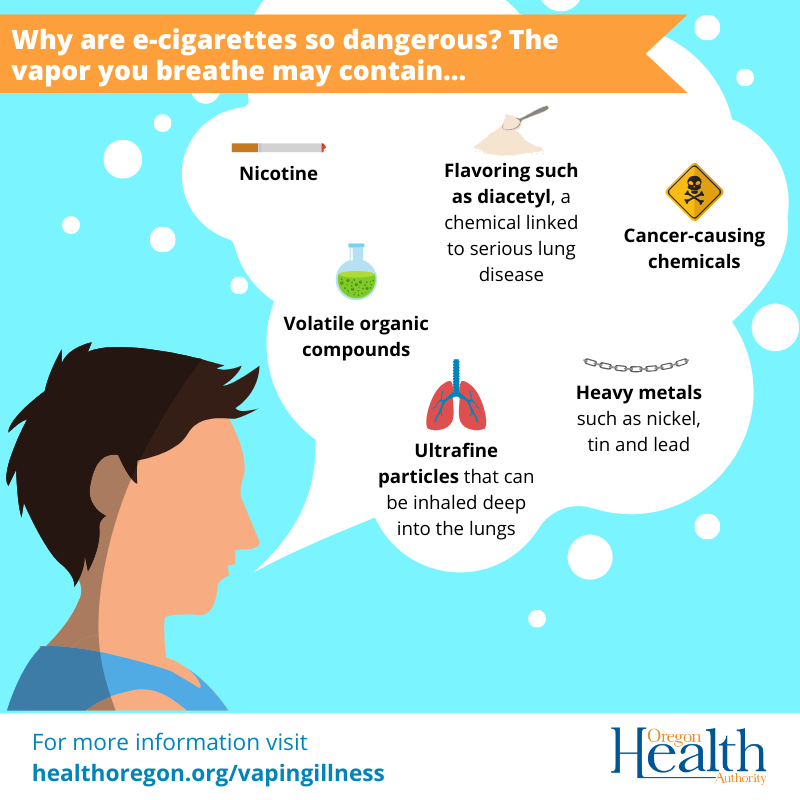Electronic cigarettes pose significant health, safety, and societal risks. Understanding these dangers requires a clear assessment of available evidence.
Health Hazards
- Nicotine Addiction & Youth Impact: E-cigarettes deliver highly addictive nicotine, harming adolescent brain development, impairing attention and learning, and increasing vulnerability to addiction to other substances.
- Respiratory Damage: Inhaling ultrafine particles, flavoring chemicals (like diacetyl linked to “popcorn lung”), volatile organic compounds, and heavy metals (e.g., nickel, tin, lead) causes lung inflammation and injury. EVALI (E-cigarette, or Vaping, product use-Associated Lung Injury) highlights severe, potentially fatal respiratory harm.
- Cardiovascular Risk: Nicotine exposure elevates heart rate and blood pressure, increasing the risk of cardiovascular disease and adverse cardiac events.
- Exposure to Carcinogens: E-cigarette aerosols contain known carcinogens (e.g., formaldehyde, acetaldehyde, acrolein), often formed during the heating process, posing long-term cancer risks.
Safety Hazards
- Battery Explosions & Fires: Faulty lithium-ion batteries can overheat, explode, or catch fire, causing severe burns and injuries.
- Accidental Poisoning: Nicotine liquid (e-liquid) is highly toxic, especially to young children. Ingestion, inhalation, or skin absorption of small amounts can be fatal.
- Device Defects: Malfunctioning devices can overheat, leak nicotine, or deliver inconsistent doses of aerosol/vapor.
Societal & Other Risks
- Gateway to Smoking: Strong evidence suggests youth e-cigarette users are significantly more likely to initiate combustible cigarette smoking later.
- Undermining Smoke-Free Norms: Vaping in public spaces reintroduces nicotine dependence cues and potentially harmful aerosols into environments previously protected from secondhand smoke.
- Exposure to Secondhand Aerosol: Bystanders inhale emissions containing nicotine, ultrafine particles, and toxins.
- Misconceptions of Safety: The perceived lower risk compared to cigarettes leads to prolonged use, potentially amplifying health consequences, particularly dual use alongside traditional cigarettes.
- Pregnancy Risks: Nicotine harms fetal brain and lung development, increasing risks of preterm birth, low birth weight, and stillbirth.
Misunderstood Harm Reduction
While likely less harmful to the individual adult smoker than continuing to smoke combustible cigarettes exclusively, e-cigarettes are not FDA-approved cessation devices. They carry substantial inherent risks. The safest option remains quitting nicotine entirely using proven methods.











